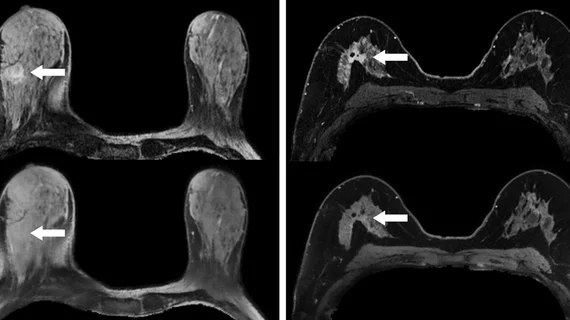GBCA dose drops significantly in breast MRI thanks to machine learning
The use of synthetic images could reduce the amount of gadolinium-based contrast agents needed for breast MRI examinations, according to new data published this week in Radiology.
According to the new paper, these images are the product of a generative adversarial network (GANs)—a type of machine learning framework that involves two neural networks that contest with each other in the form of a zero-sum game.
For this latest research, simulated low-contrast images were created by adding virtual noise to existing contrast-enhanced images. GANs were then used to recover contrast-enhanced breast MRI scans from unenhanced images and virtual low-contrast images. This technique allows for a significant reduction in GBCA dose without sacrificing the benefits of contrast-enhanced exams, which is a goal of many clinicians.
“Although no long-term side effects of gadolinium deposition have been reported in the literature thus far, there is still an obvious clinical need to reduce the amount of gadolinium injected for diagnostic purposes,” co-senior author of the new paper Christiane Kuhl, from the Department of Diagnostic and Interventional Radiology at University Hospital RWTH Aachen in Germany, and colleagues explained. “Accordingly, there is growing interest in developing methods that help reduce the amount of GBCA needed for breast MRI.”
The team retrospectively tested this technique on 9,751 breast MRI examinations from 5,086 patients. Two blinded radiologists were asked to distinguish between the real and synthetic images before rating them on a five-point Likert scale.
When blinded, the readers were not able to differentiate the synthetic from the real post-contrast images. When unblinded, the radiologists compared the two sets of images side by side and found the conspicuity on synthetic images to be noninferior with reduced contrast dose.
The team concluded that their results support the notion that GANs can use simulated low contrast images to recover full image contrast for breast MRI, but that they cannot be reliably used in the complete absence of contrast.
The study abstract is available here.
An accompanying editorial can be found here.

